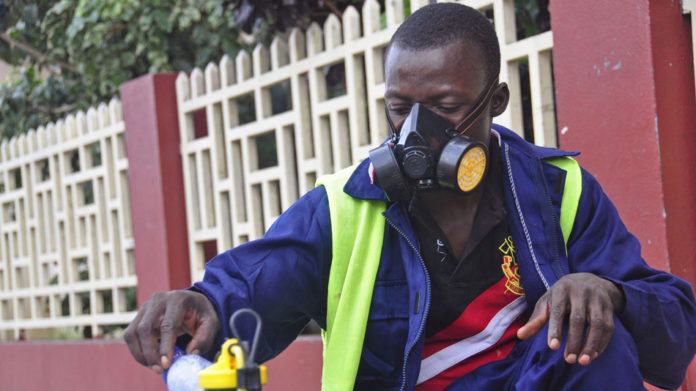Ebola-Stricken American Doctor Heads to U.S., First-Ever Patient Brought Into the Country

NEW YORK — An American doctor infected with the Ebola virus is the first person being flown to the United States for treatment, and is expected to arrive Saturday in Atlanta, a missionary group said.
Two seriously ill American aid workers will be treated at Atlanta’s Emory University Hospital. Samaritan’s Purse missionary group spokesperson Todd Shearer said a plane carrying Dr. Kent Brantly has left West Africa. Brantly works for the group that is paying for the trip.
The Gulfstream jet outfitted with a special, portable tent designed for transporting patients with highly infectious diseases was due to arrive at Dobbins Air Force Base in Marietta, Georgia, just outside Atlanta. The Centers for Disease Control and Prevention said the private jet can only accommodate one patient at a time.
From there, the doctor will be whisked into one of the most sophisticated hospital-isolation units in the country, about 15 miles away. The second patient will follow a few days later.
Outside Emory, a gaggle of about 20 members of the media had gathered to chronicle the arrival. There was no noticeable police presence and all roads were open. It will be the first time anyone infected with the disease is brought into the country. U.S. officials are confident the patients can be treated without putting the public in any danger.
The specialized unit at Emory University Hospital was opened 12 years ago to care for federal health workers exposed to some of the world’s most dangerous germs.
Now it’s being pressed into service for the two seriously ill Americans who worked at a hospital in Liberia, one of the three West Africa countries hit by the largest Ebola outbreak in history.
The Emory hospital unit is located just down a hill from the CDC. It is one of about four such units around the country for testing and treating people infected with dangerous, infectious germs. The unit is “physically separate from other patient areas, and has unique equipment and infrastructure that provide an extraordinarily high level of clinical isolation,” according to a statement from Emory, released Friday.
The unit has its own laboratory equipment, so samples don’t have to be sent to the main hospital lab. Located on the ground floor, it’s carefully separated from other patient areas, said Dr. Eileen Farnon, a Temple University doctor who formerly worked at the CDC, and led teams that investigated past Ebola outbreaks in Africa.
The two Americans — Brantly and Nancy Writebol — worked for U.S. aid groups Samaritan’s Purse and SIM at a Liberian hospital that treated Ebola patients. Late last week, the North Carolina-based Samaritan’s Purse said Brantly, 33, had been diagnosed with Ebola. Then, Writebol’s infection was disclosed.
“Every precaution is being taken to move the patients safely and securely, to provide critical care en route on a non-commercial aircraft, and to maintain strict isolation upon arrival in the United States,” U.S. State Department spokesperson Marie Harf said in a statement released Friday.
Ebola is considered one of the world’s deadliest diseases. The current outbreak in Liberia, Guinea and Sierra Leone has affected more than 1,300 people, and killed more than 700 this year. The virus is spread through direct contact with blood, urine, saliva and other bodily fluids from an infected person. It is not spread through the air, so it is not as infectious as a germ like the flu.
An Emory emergency medical team in Liberia has evaluated the two aid workers, and deemed both stable enough for the trip to Atlanta, said Emory’s Dr. Bruce Ribner. Hospital spokesperson Vincent Dollard said the first patient was scheduled to arrive Saturday.
“If there’s any modern therapy that can be done,” such as better monitoring of fluids, electrolytes and vital signs, workers will be able to do it better in this safe environment, said Dr. Philip Brachman, an Emory University public health specialist, who for many years headed the CDC’s disease detectives program. “That’s all we can do for such a patient. We can make them feel comfortable” and let the body try to beat back the virus, he said.
There’s no specific treatment for Ebola, so doctors try to ease the symptoms, which include fever, headache, vomiting and diarrhea. Some cases suffer severe bleeding.
Emory’s Ribner, one of the doctors who will be seeing the Ebola patients, stressed that safety precautions will be taken by staff. “I have no concerns about even my personal health or the health of the other health care workers who will be working in that area,” Ribner said.
Additional reporting by Mashable
Have something to add to this story? Share it in the comments.
